|

On eBay Now...
† 19TH SAINT LOUIS IX KING OF FRANCE PARIAN BISQUE PORCELAIN STATUE PARIS FRANCE For Sale
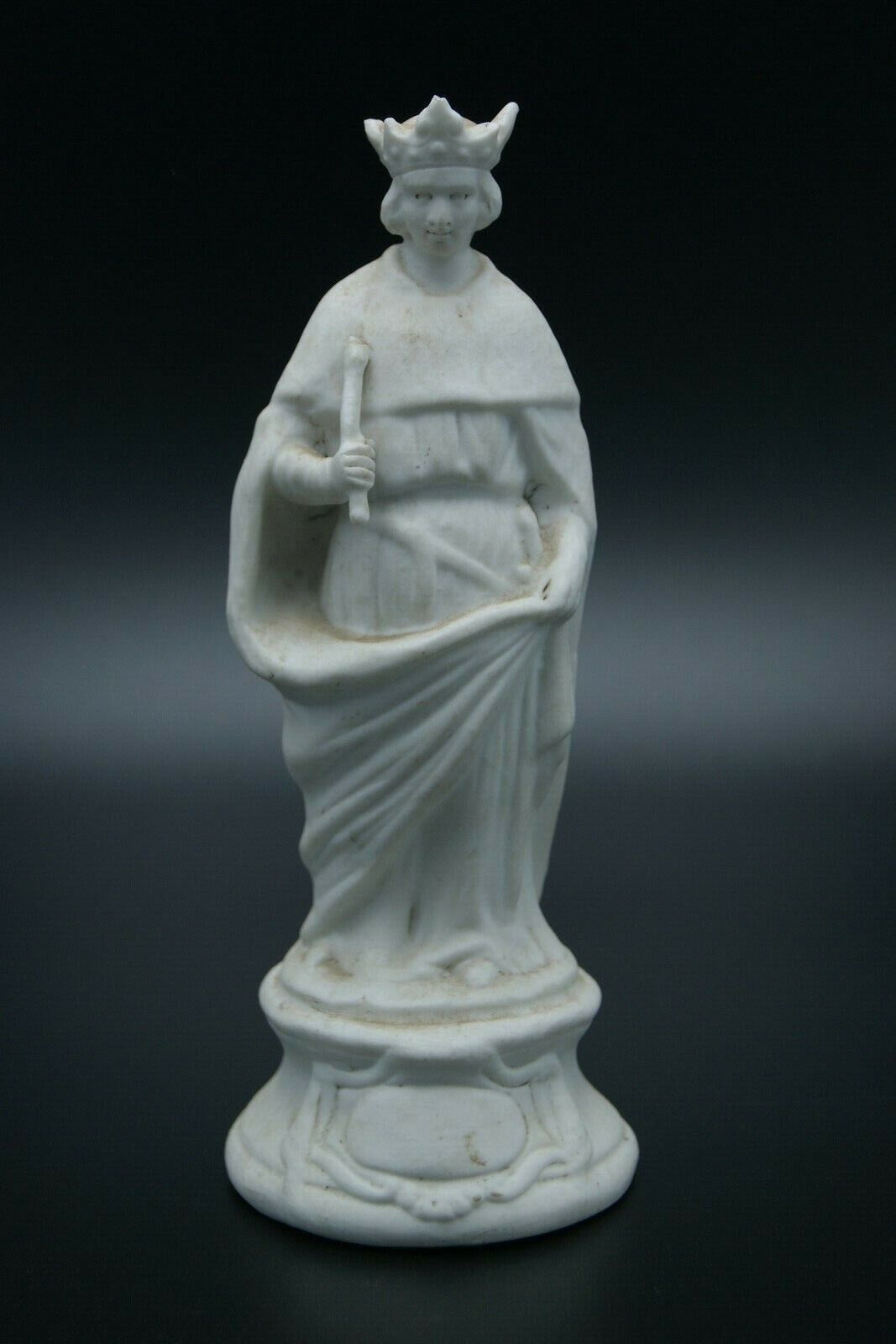
When you click on links to various merchants on this site and make a purchase, this can result in this site earning a commission. Affiliate programs and affiliations include, but are not limited to, the eBay Partner Network.

† 19TH SAINT LOUIS IX KING OF FRANCE PARIAN BISQUE PORCELAIN STATUE PARIS FRANCE:
$499.99
† SAINT LOUIS IX KING OF FRANCE
PARIAN BISQUE PORCELAINNUMBERED 26 - MARKED L&Mfrom PARIS - FRANCE 19TH century †DIMENSIONS:
200mmX 80 mm.W. 332.8 grs.
Louis IX of France
Saint Louis IXContemporary depiction from about 1230King of France(more...)Reign8 November 1226 – 25 August 1270Coronation29 November 1226 inReims CathedralPredecessorLouis VIIISuccessorPhilip IIIBorn25 April 1214
Poissy, FranceDied25 August 1270(aged56)
Tunis, North AfricaBurialBasilica of St DenisSpouseMargaret of ProvenceIssue
among others...Isabella, Queen of Navarre
Louis of France
Philip III of France
John Tristan, Count of Valois
Peter, Count of Perche and Alençon
Blanche, Infanta of Castile
Margaret, Duchess of Brabant
Robert, Count of Clermont
Agnes, Duchess of BurgundyHouseCapetFatherLouis VIII of FranceMotherBlanche of CastileReligionCatholicismFrench MonarchyDirect CapetiansHugh Capet[show]Robert II[show]Henry I[show]Philip I[show]Louis VI[show]Louis VII[show]Philip II[show]Louis VIII[show]Louis IX[show]Philip III[show]Philip IV[show]Louis X[show]John IPhilip V[show]Charles IV[show]Louis IX(25 April 1214– 25 August 1270), commonly known asSaint Louis, wasKing of Franceand is a canonizedCatholicandAnglicansaint. Louis wascrowned in Reimsat the age of 12, following the death of his fatherLouis VIII the Lion, although his mother,Blanche of Castile, ruled the kingdom until he reached maturity. During Louis\'s childhood, Blanche dealt with the opposition of rebellious vassals and put an end to theAlbigensian Crusadewhich had started 20 years earlier. As an adult, Louis IX faced recurring conflicts with some of the most-powerful nobles, such asHugh X of LusignanandPeter of Dreux. Simultaneously,Henry III of Englandtried to restore hiscontinental possessions, but was defeated at thebattle of Taillebourg. His reign saw the annexation of several provinces, notablyNormandy,MaineandProvence. Louis IX was a reformer and developed French royal justice, in which the king was the supreme judge to whom anyone could appeal to seek the amendment of a judgment. He bannedtrials by ordeal, tried to prevent theprivate warsthat were plaguing the country and introduced thepresumption of innocencein criminal procedure. To enforce the application of this new legal system, Louis IX createdprovostsandbailiffs. Following a vow he made after a serious illness and confirmed after a miraculous cure, Louis IX took an active part in theSeventhandEighth Crusades. He died fromdysenteryduring the latter crusade, and was succeeded by his sonPhilip III. Louis\'s actions were inspired byChristianzeal and Catholic devotion. He decided to severely punishblasphemy—for which he set the punishment tomutilationof the tongue and lips,[1]gambling,interest-bearing loansandprostitution. He spent exorbitant sums on presumedrelicsofChrist, for which he built theSainte-Chapelle, and he expanded the scope of theInquisitionand ordered the burning ofTalmudsand other Jewish books. He is the onlycanonizedking of France, and there are consequently manyplaces named after him.
Sources[edit]Much of what is known of Louis\'s life comes fromJean de Joinville\'s famousLife of Saint Louis. Joinville was a close friend, confidant, and counsellor to the king, and also participated as a witness in the papal inquest into Louis\' life that ended with his canonisation in 1297 byPope Boniface VIII. Two other important biographies were written by the king\'sconfessor,Geoffrey of Beaulieu, and his chaplain,William of Chartres. While several individuals wrote biographies in the decades following the king\'s death, only Jean of Joinville, Geoffrey of Beaulieu, and William of Chartres wrote from personal knowledge of the king, and all three are biased favorably. The fourth important source of information isWilliam of Saint-Parthus\' biography,[2]which he wrote using the papal inquest mentioned above. Early life[edit]Louis was born on 25 April 1214 atPoissy, near Paris, the son ofPrince Louis the LionandPrincess Blanche, and baptised inLa Collégiale Notre-Damechurch. His grandfather on his father\'s side wasPhilip II, king of France; while his grandfather on his mother\'s side wasAlfonso VIII, king ofCastile. Tutors of Blanche\'s choosing taught him most of what a king must know—Latin, public speaking, writing, military arts, and government.[3]He was 9 years old when his grandfather Philip II died and his father ascended as Louis VIII.[4]A member of theHouse of Capet, Louis was twelve years old when his father died on 8 November 1226. He was crowned king within the month atReimscathedral. Because of Louis\'s youth, his mother ruled France asregentduring his minority.[5] Louis\' mother trained him to be a great leader and a good Christian. She used to say:[6] I love you, my dear son, as much as a mother can love her child; but I would rather see you dead at my feet than that you should ever commit a mortal sin. His younger brotherCharles I of Sicily(1227–85) was created count ofAnjou, thus founding the secondAngevindynasty. No date is given for the beginning of Louis\'s personal rule. His contemporaries viewed his reign as co-rule between the king and his mother, though historians generally view the year 1234 as the year in which Louis began ruling personally, with his mother assuming a more advisory role.[7]She continued to have a strong influence on the king until her death in 1252.[5][8] Marriage[edit]On 27 May 1234, Louis marriedMargaret of Provence(1221 – 21 December 1295), whose sisterEleanorlater became the wife ofHenry III of England. The new queen\'s religious zeal made her a well suited partner for the king. He enjoyed her company, and was pleased to show her the many public works he was making in Paris, both for its defense and for its health. They enjoyed riding together, reading, and listening to music. This attention raised a certain amount of jealousy in his mother, who tried to keep them apart as much as she could.[9] Disputation of Paris[edit]Main article:Disputation of ParisIn the 1230s,Nicholas Donin, a Jewish convert to Christianity, translated theTalmudand pressed 35 charges against it toPope Gregory IXby quoting a series of blasphemous passages aboutJesus,Maryor Christianity. There is a Talmudic passage, for example, whereJesus of Nazarethis sent to Hell to beboiled in excrementfor eternity. Donin also selected an injunction of the Talmud that permits Jews to kill non-Jews. This led to theDisputation of Paris, which took place in 1240 at the court of Louis IX, where rabbiYechiel of Parisdefended the Talmud against the accusations of Nicholas Donin. The translation of the Talmud from Judeo Aramaic to a non-Jewish, profane language was seen by Jews as a profound violation. The disputation led to the condemnation of the Talmud and the burning of thousands of copies.[10] Crusading[edit]When Louis was 15, his mother brought an end to theAlbigensian Crusadein 1229 after signing an agreement with CountRaymond VII, Count of Toulousethat cleared the latter\'s father of wrongdoing.[11]Raymond VI, Count of Toulousehad been suspected of murdering a preacher on a mission to convert theCathars.[12] Louis went on twocrusades, in his mid-30s in 1248 (Seventh Crusade), and then again in his mid-50s in 1270 (Eighth Crusade). Seventh Crusade[edit]Engravingrepresenting the departure fromAigues-Mortesof King Louis IX for theSeventh Crusade(byGustave Doré)Equestrian statue of King Saint Louis at theSacré-CœurIn 1248 Louis decided that his obligations as a son of the Church outweighed those of his throne, and he left his kingdom for a disastrous six-year adventure. Since the base of Muslim power had shifted to Egypt, Louis did not even march on theHoly Land; any war againstIslamnow fit the definition of a Crusade.[13] Louis and his followers landed in Egypt on 5 June 1249 and began his first crusade with the rapid capture of the port ofDamietta.[13][14]This attack caused some disruption in the MuslimAyyuofferempire, especially as the current sultan,Al-Malik as-Salih Najm al-Din Ayyub, was on his deathbed. However, the march from Damietta towardCairothrough theNile River Deltawent slowly. The rising of the Nile and the summer heat made it impossible for them to advance and follow up on their success.[15]During this time, the Ayyuoffer sultan died, and the sultan\'s wifeShajar al-Durrset in motion a sudden power shift that would make her Queen and eventually place the Egyptian army of theMamluksin power. On 6 April 1250 Louis lost his army at theBattle of Al Mansurah[16]and was captured by the Egyptians. His release was eventually negotiated in return for a ransom of 400,000livres tournois(at the time France\'s annual revenue was only about 1,250,000livres tournois) and the surrender of the city of Damietta.[17] Louis IX was taken prisoner at theBattle of Fariskur, during theSeventh Crusade(Gustave Doré).Four years in Palestine[edit]Following his release from Egyptian captivity, Louis spent four years in theLatin kingdomsofAcre,Caesarea, andJaffa, using his wealth to assist theCrusadersin rebuilding their defences[18]and conducting diplomacy with the Islamic powers of Syria and Egypt. In the spring of 1254 he and his army returned to France.[13] Louis exchanged multiple letters and emissaries withMongolrulers of the period. During his first crusade in 1248, Louis was approached by envoys fromEljigidei, the Mongol military commander stationed inArmeniaandPersia.[19]Eljigidei suggested that King Louis should land in Egypt, while Eljigidei attacked Baghdad, to prevent the Saracens of Egypt and those of Syria from joining forces. Louis sentAndré de Longjumeau, a Dominican priest, as an emissary to the Great KhanGüyük Khan(r. 1246–48) in Mongolia. Güyük died before the emissary arrived at his court, however, and nothing concrete occurred. Instead his queen and now regent,Oghul Qaimish, politely turned down the diplomatic offer.[20] Louis dispatched another envoy to the Mongol court, the FranciscanWilliam of Rubruck, who went to visit the Great KhanMöngke(1251–1259) in Mongolia. He spent several years at the Mongol court. In 1259,Berke, the ruler of the Golden Horde, westernmost part of theMongolian Empire, demanded the submission of Louis.[21]On the contrary, Mongolian Emperors Möngke andKhubilai\'s brother, theIlkhanHulegu, sent a letter seeking military assistance from the king of France, but the letter did not reach France.[22] Eighth Crusade[edit]Death of Saint Louis: On 25 August 1270, Saint Louis dies under his fleurdelisé tent before the city of Tunis. Illuminated byJean Fouquet,Grandes Chroniques de France(1455–1460)In a parliament held at Paris, 24 March 1267, Louis and his three sons took the cross. On hearing the reports of the missionaries, Louis resolved to land at Tunis, and he ordered his younger brother, Charles of Anjou, to join him there. The crusaders, among whom was PrinceEdward of England, landed atCarthage17 July 1270, but disease broke out in the camp. Many died of dysentery, and on 25 August, Louis himself died.[18][23] Patron of arts and arbiter of Europe[edit]Louis\' patronage of the arts drove much innovation inGothic artandarchitecture, and the style of his court radiated throughout Europe by both the purchase of art objects from Parisian masters for export, and by the marriage of the king\'s daughters and female relatives to foreign husbands and their subsequent introduction of Parisian models elsewhere. Louis\' personal chapel, theSainte-Chapellein Paris, was copied more than once by his descendants elsewhere. Louis most likely ordered the production of theMorgan Bible, a masterpiece of medieval painting. Pope Innocent IVwith Louis IX atClunyDuring the so-called \"golden century of Saint Louis\", the kingdom of France was at its height in Europe, both politically and economically. Saint Louis was regarded as \"primus inter pares\", first among equals, among the kings and rulers of the continent. He commanded the largest army and ruled the largest and wealthiest kingdom, the European centre of arts and intellectual thought at the time. The foundations for the famous college of theology later known as theSorbonnewere laid in Paris about the year 1257.[15]The prestige and respect felt in Europe for King Louis IX were due more to the attraction that his benevolent personality created rather than to military domination. For his contemporaries, he was the quintessential example of the Christian prince and embodied the whole ofChristendomin his person. His reputation for saintliness and fairness was already well established while he was alive, and on many occasions he was chosen as an arbiter in quarrels among the rulers of Europe.[7] Shortly before 1256,Enguerrand IV, Lord of Coucy, arrested and without trial hanged three young squires of Laon whom he accused of poaching in his forest. In 1256 Louis had him arrested and brought to theLouvreby his sergeants. Enguerrand demanded judgment by his peers and trial by battle, which the king refused because he thought it obsolete. Enguerrand was tried, sentenced, and ordered to pay 12,000 livres. Part of the money was to pay for masses in perpetuity for the men he had hanged. In 1258, Louis andJames I of Aragonsigned theTreaty of Corbeil, under which Louis renounced his feudal overlordship over theCounty of BarcelonaandRoussillon, which was held by the King of Aragon. James in turn renounced his feudal overlordship over several counties in southern France includingProvenceandLanguedoc. In 1259 Louis signed theTreaty of Paris, by whichHenry III of Englandwas confirmed in his possession of territories in southwestern France and Louis received the provinces andTouraine.[5] Religious nature[edit]Louis IX allowing himself to be whipped aspenanceThe perception of Louis IX as the exemplary Christian prince was reinforced by his religious zeal. Louis was a devout Catholic, and he built theSainte-Chapelle(\"Holy Chapel\"),[7]located within the royal palace complex (now theParis Hall of Justice), on theÎle de la Citéin the centre of Paris. TheSainte Chapelle, a perfect example of theRayonnantstyle ofGothic architecture, was erected as a shrine for what he believed to be theCrown of Thornsand a fragment of theTrue Cross, supposed preciousrelicsof thePassionof Jesus. Louis purchased these in 1239–41 from EmperorBaldwin IIof theLatin EmpireofConstantinople, for the exorbitant sum of 135,000livres(the construction of the chapel, for comparison, cost only 60,000 livres). Louis IX took very seriously his mission as \"lieutenant of God on Earth\", with which he had been invested when he was crowned inReims. To fulfill this duty, he conducted twocrusades, and even though both ended disastrously, they contributed to his prestige. Everything he did was for the glory of God and for what he saw as the good of his people. He protected the poor and was never heard speak ill of anyone. He excelled in penance and had a great love for the Church. He was merciful even to rebels. When he was urged to put to death a prince who had followed his father in rebellion, he refused, saying: \"A son cannot refuse to obey his father.\"[6] Hair shirtandscourgeof Louis IX. Treasury ofNotre-Dame de Paris.In 1230 the King forbade all forms ofusury, defined at the time as any taking of interest. Where the original Jewish and Lombard borrowers could not be found, Louis exacted from the lenders a contribution towards the crusade which Pope Gregory was then trying to launch.[15]Louis also ordered, at the urging ofPope Gregory IX, the burning in Paris in 1243 of some 12,000 manuscript copies of theTalmudand other Jewish books. Eventually, the edict against the Talmud was overturned by Gregory IX\'s successor, Innocent IV.[24] In addition to Louis\' legislation against usury, he expanded the scope of theInquisitionin France. The area most affected by this expansion was southern France where theCatharheresy had been strongest. The rate of these confiscations reached its highest levels in the years before his first crusade, and slowed upon his return to France in 1254. In 1250, he headed a crusade, but was taken prisoner. During his captivity, he recited theDivine Officeevery day. After his release, he visited the Holy Land before returning to France.[6]In all these deeds, Louis IX tried to fulfill the duty of France, which was seen as \"the eldest daughter of the Church\" (la fille aînée de l\'Église), a tradition of protector of the Church going back to theFranksandCharlemagne, who had been crowned by thePope Leo IIIin Rome in 800. Indeed, the official Latin title of the kings of France wasRex Francorum, i.e. \"king of the Franks\" (until Louis\' grandfather\'s reign,Philip IIwhose seal readsRex Franciae, i.e. \"king of France\"), and the kings of France were also known by the title \"most Christian king\" (Rex Christianissimus). The relationship between France and the papacy was at its peak in the 12th and 13th centuries, and most of the crusades were actually called by the popes from French soil. Eventually, in 1309,Pope Clement Veven left Rome and relocated to the French city ofAvignon, beginning the era known as theAvignon Papacy(or, more disparagingly, the \"Babylonian captivity\"). He was renowned for his charity. Beggars were fed from his table, he ate their leavings, washed their feet, ministered to the wants of the lepers, and daily fed over one hundred poor. He founded many hospitals and houses: the House of theFilles-Dieufor reformed prostitutes; theQuinze-Vingtfor 300 blind men (1254), hospitals at Pontoise, Vernon, Compiégne.[25] St. Louis installed a house of theTrinitarian Orderin hischâteau of Fontainebleau.He chose Trinitarians as his chaplains, and was accompanied by them on his crusades. In his spiritual testament he wrote: \"My dearest son, you should permit yourself to be tormented by every kind of martyrdom before you would allow yourself to commit a mortal of Louis IX of FranceChildren[edit] - Blanche (12 July/4 December[26]1240 – 29 April 1243), died in infancy.
- Isabella(2 March 1241 – 28 January 1271), marriedTheobald II of Navarre.
- Louis(23 September 1243/24 February 1244[26]– 11 January/2 February 1260). Betrothed toBerengaria of Castilein Paris on 20 August 1255.[26]
- Philip III(1 May 1245 – 5 October 1285), married firstly toIsabella of Aragonin 1262 and secondly toMaria of Brabantin 1274.
- John (1246/1247[26]– 10 March 1248), died in infancy.
- John Tristan(8 April 1250 – 3 August 1270), Count of Valois, marriedYolande II, Countess of Nevers.
- Peter(1251 – 6/7 April 1284), Count of Perche and Alençon, marriedJoanne of Châtillon.
- Blanche(early 1253[26]– 17 June 1320), marriedFerdinand de la Cerda, Infante of Castile.
- Margaret(early 1255[26]– July 1271), marriedJohn I, Duke of Brabant.
- Robert(1256 – 7 February 1317), Count of Clermont, marriedBeatrice of Burgundy. The French crown devolved upon his male-line descendant,Henry IV, when the legitimate male line of Robert\'s older brother Philip III died out in 1589.
- Agnes(1260 – 19/20 December 1327[26]), marriedRobert II, Duke of Burgundy.
Louis had his two children that died in infancy to be buried at the Cistercian abbey of Royaumont; in 1820 they were transferred toSaint-Denis Basilica.[27] Death and legacy[edit]Reliquaryof Saint Louis (end of the 13th century)Basilica of Saint Dominic,Bologna, ItalyDuring his second crusade, Louis died atTunison 25 August 1270, in an epidemic ofdysenterythat swept through his army.[23][28][29]As Tunis wasMuslimterritory, his body was subject to the process known asmos Teutonicus(a postmortemfunerary customused inmedieval Europewhereby the flesh was boiled from the body, so that the bones of the deceased could be transported hygienically from distant lands back home) for its transportation back to France.[30]He was succeeded by his son,Philip III. His heart and intestines, however, were conveyed by his younger brother,Charles I of Naples, for burial in the cathedral ofMonrealenearPalermo.[31]His bones were carried in a lengthy processional across Sicily, Italy, the Alps, and France, until they were interred in the royal necropolis atSaint-Denisin May 1271.[32]Charles and Philip later disbursed a number ofrelicsto promote his veneration.[33] Veneration as a saint[edit]Saint LouisSaint Louis, painting byEl Grecoc. 1592 – 95King of France, ConfessorBorn25 April 1214
Poissy, FranceDied25 August 1270(aged56)
Tunisin what is nowTunisiaVeneratedinRoman Catholic Church,Anglican CommunionCanonized11 July 1297 byPope Boniface VIIIFeast25 AugustAttributesDepicted asKing of France, generally with acrown, holding asceptrewith afleur-de-lyson the end, possibly with blue clothing with a spread of white fleur-de-lys (coat of arms of the French monarchy)PatronageFrance, French monarchy,Third Order of St. Francis,Archdiocese of New Orleans,Roman Catholic Diocese of Port-Louis, style=\"margin: 0.5em 0px; line-height: inherit;\">Pope Boniface VIIIproclaimed the canonization of Louis in 1297;[34]he is the only French king to be declared asaint.[35]Louis IX is often considered the model of the ideal Christian monarch.[34]The impact of his canonization was so great that many of hissuccessorswere named Louis.Named in his honour, theSisters of Charity of St. Louisis a Roman Catholicreligious orderfounded inVannes, France, in 1803.[36]A similar order, the Sisters of St Louis, was founded inJuillyin 1842.[37][38] He is honoured as co-patron of theThird Order of St. Francis, which claims him as a member of the Order. Even in childhood, his compassion for the poor and suffering people had been obvious to all who knew him and when he became king, over a hundred poor people ate in his house on ordinary days. Often the king served these guests himself. Such acts of charity, coupled with Louis\' devout religious practices, gave rise to the legend that he joined the Third Order of St. Francis. Though it is unlikely that Louis did join the order, his life and actions proclaimed him one of them in spirit.[3] Places named after Saint Louis[edit]The cities ofSan Luis Potosíin Mexico;St. Louis, Missouri;St. Louis Park, Minnesota;St. Louis, Michigan;San Luis, Arizona;San Luis, Colorado;Saint-Louis du Sénégal;Saint-Louisin Alsace; as well asLake Saint-Louisin Quebec, theMission San Luis Rey de Franciain California andSão Luís, Maranhãoin Brazil are among the many places named after the French king and saint. The Cathedral Saint-Louis inVersailles; theBasilica of St. Louis, King of France completed in 1834and theCathedral Basilica of St. Louis completed in 1914, both in St. Louis, Missouri; and theSt. Louis Cathedral, New Orleanswere also named for the king. The French royalOrder of Saint Louis(1693–1790 and 1814–1830), theÎle Saint-Louisas well as a hospital in the 10th arrondissement of Paris also bear his name. The national church of France in Rome also carries his name: San Luigi dei Francesi in Italian or Saint Louis of France in English. Also theCathedral of St Louisin Plovdiv, Bulgaria, theChurch of St Louisin Moscow, Russia, and rue Saint Louis ofPondicherry Port-Louis, the capital city of Mauritius, as well as its cathedral are also named after St. Louis, who is the patron saint of the island. Notable portraits[edit]A bas-relief of St. Louis is one of the carved portraits of historic lawmakers that adorns the chamber of theUnited States House of Representatives. Saint Louis is also portrayed on afriezedepicting a timeline of important lawgivers throughout world history in theCourtroomat theSupreme Court of the United States. A statue of St. Louis by the sculptor John Donoghue stands on the roofline of theNew York State Appellate DivisionCourt at 27 Madison Avenue in New York City. TheApotheosis of St. Louisis an equestrian statue of the saint, byCharles Henry Niehaus, that stands in front of theSaint Louis Art Museumin Forest Park. A heroic portrait byBaron Charles de Steubenhangs in theBasilica of the National Shrine of the Assumption of the Blessed Virgin MaryinBaltimore. An 1821 gift ofKing Louis XVIII of France, it depicts St. Louis burying his plague-stricken troops before the siege ofTunisat the beginning of theEighth Crusadein 1270. Livraison et Expédition(Shipping & Handling)- Les pièces seront soigneusement emballées individuellement et protégées avec du film bulle et carton renforcé,
- Pour les pays autres que la France, envoi en recommandé avec assurance Ad Valorem à hauteur de la valeur de l\'objet.
- All items will be securely packed, individually wrapped with acid-free silk paper, foam, bubble wrap and reinforced cardboard.
- Shipped from FRANCEwith proof of delivery and insured for their value.
- Any overseas custom taxes and duties are all borne by the buyer
- No custom taxes for European Community
- WE SHIP WORLDWIDE
Notes importantes(Important points)- MERCI DE POSEZ TOUTES VOS QUESTION AVANT D’ENCHERIR OU D’ACHETER.
- A moins que ce soit spécifié autrement dans la description, nos objets en ventesont d’occasion. Par conséquent des traces d’usage existent (aussi infimes soient-elles). Nous tenons à ce que vous portez attention et demandez toute information supplémentaire afin que vous soyez satisfait de votre achat.
- Nos objets sont vendus «à la description». En enchérissant/achetant, le futur acquéreur accepte qu’il a étudié les photos, lu la description avec attention et notre évaluation de nos objets.
- Nous décrivons le mieux possible nos objets avec des photos reflétant le plus la réalité. D’autres photos sont à votre disposition sur simple demande.
- Pour les transactions en dehors de l\'Europe, l\'acheteur doit obligatoirement avoir une adresse postale Paypal confirmée.
- PLEASE ASK ALL QUESTIONS BEFORE offerDING OR BUYING
- Unless specified otherwise in the description, all our items are previously owned. There will be logical traces of usage, consistent with age and normal use. Please take note of this and ask any other information if you have further enquiries.
- All goods are sold “as is”. By offerding/buying, the buyer agrees he has studied the photos, read the description carefully and agrees with our assessment of the items.
- We describe our items the best we can with pictures reflecting the condition as closely as possible.
- Other pictures are available on demand.
- For transaction outside Europe, the buyer must have a confirmed postal address on their Paypal account.
Thanks for looking!

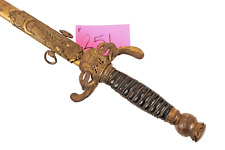
19th Century York Rite Masonic Sword and Scabbard- Named - Made by LIly $400.00

19th Century Passover Wine Decanter $199.99
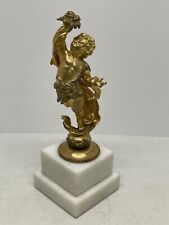
19th Century French Gilt Bronze Cherub $265.00
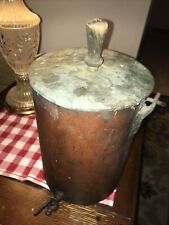
19th Century Solid Copper Vintage Drink Dispenser $155.00
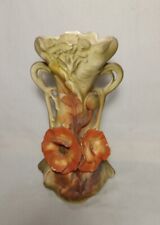
19th Century Royal Dux Amphord Style Vase $85.00
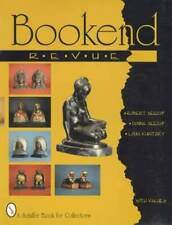
19th & 20th Century Vintage Bookend Collector Guide Art Deco Antique Bronze More $29.95
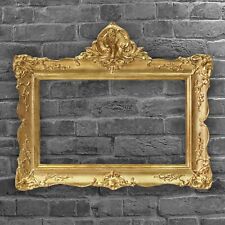
19th century Old wooden picture frame, mirror frame, dimensions: 25 x 14.9 in $570.00

19th cent old wooden picture frame fold dimensions: 25.4 x 20.3 in $480.00
|